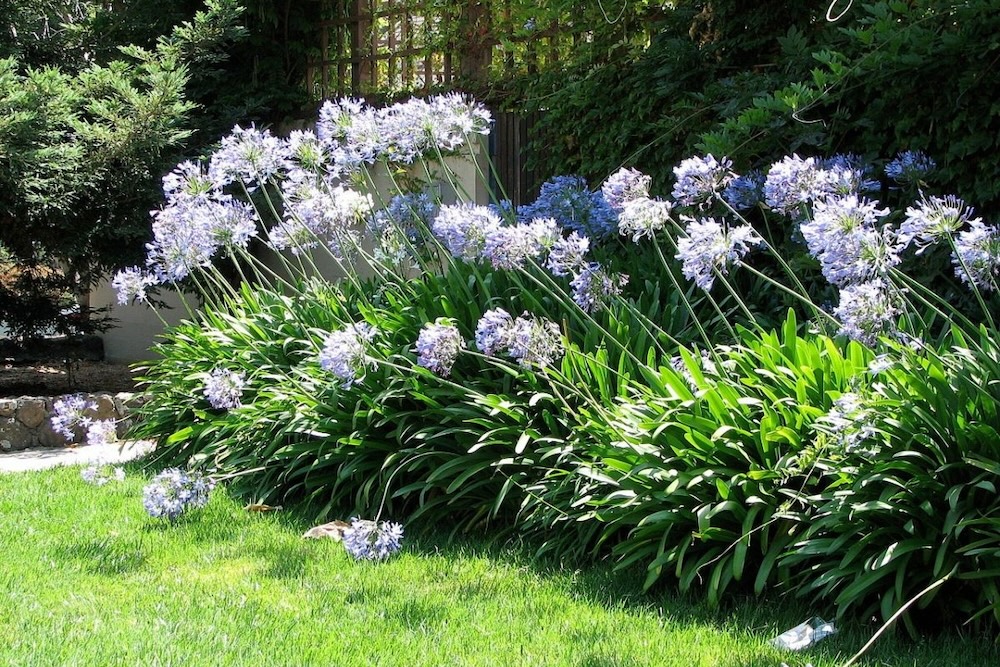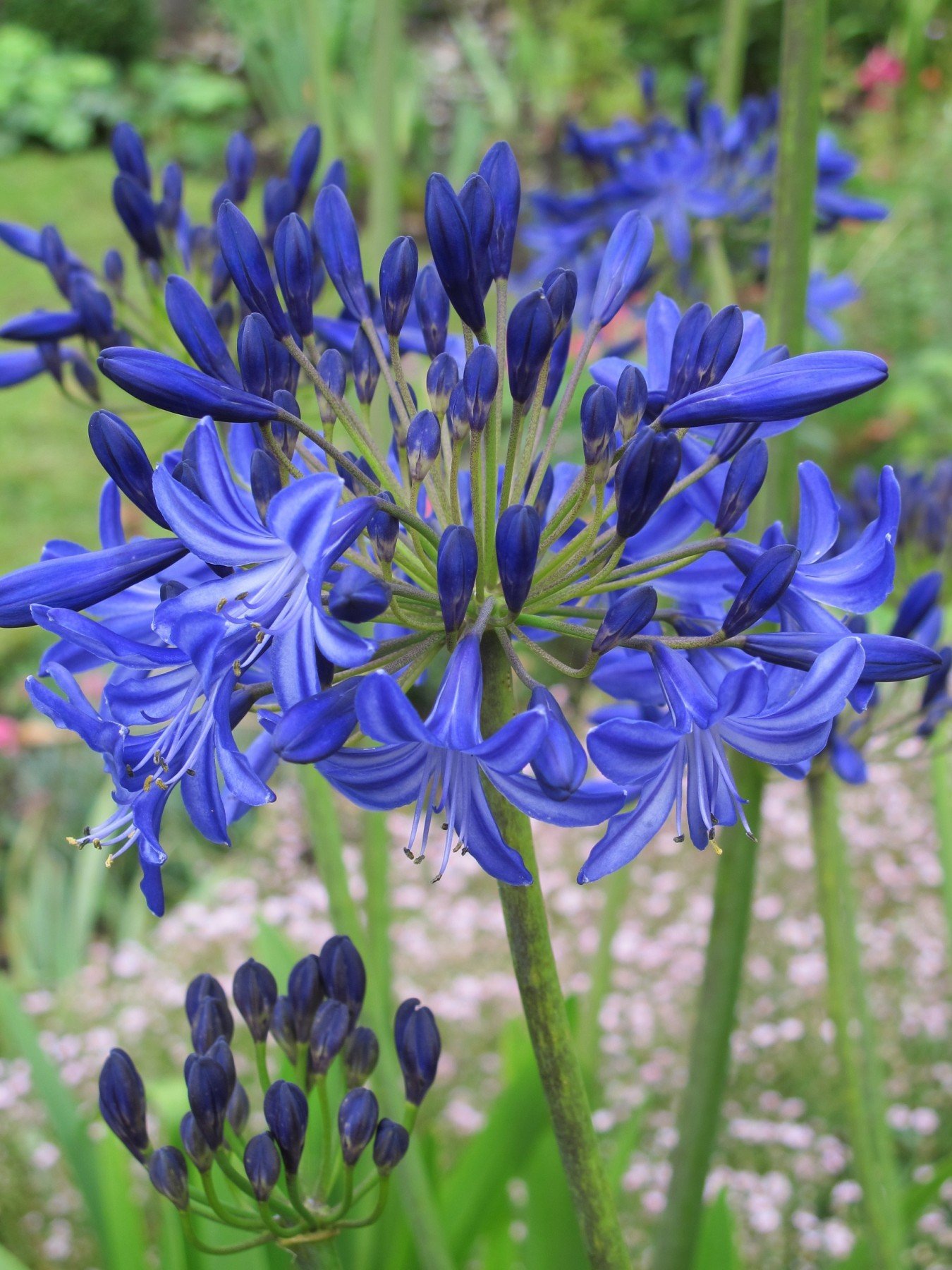Agapanthus Buddy Plants: Perfect Pairings for Your Garden
Agapanthus Buddy Plants: Perfect Pairings for Your Garden
Blog Article
Unleashing the Secret to Successful Agapanthus Cultivation: Idea for a Flourishing Yard
In the realm of horticulture, growing agapanthus successfully requires a strategic technique that incorporates various facets of plant care. By comprehending the subtleties of agapanthus growing, one can create an environment where these plants thrive and flower perfectly.
Planting Agapanthus: Ideal Practices
When planting Agapanthus, proper dirt preparation is important for guaranteeing effective growth and advancement of these attractive blossoms. Agapanthus, commonly referred to as Lily of the Nile or African lily, grows in well-draining dirt with a slightly acidic to neutral pH degree - Agapanthus. Prior to planting, it is important to change hefty clay dirts with organic issue such as garden compost or peat moss to improve drainage and provide essential nutrients for the plants
To grow Agapanthus, select a location that receives complete sunshine to partial shade, as this will advertise healthy and balanced development and plentiful flowering. Dig a hole twice the size of the plant's origin round and position the Agapanthus at the very same depth it was previously growing. Gently backfill the opening with soil, pressing down securely to eliminate any air pockets around the roots.
Water the newly planted Agapanthus thoroughly and continue to maintain the soil evenly wet, specifically throughout the plant's active growing season. Agapanthus. Applying a balanced plant food once a month can additionally sustain the plant's growth and blooming. By adhering to these finest methods for growing Agapanthus, you can produce a spectacular display of these fascinating blossoms in your garden
Suitable Dirt Conditions for Agapanthus
For ideal growth and blooming success of Agapanthus plants, making sure the dirt conditions are excellent is vital. Agapanthus prospers in well-draining soil with a slightly acidic to neutral pH degree ranging from 6.0 to 7.0. This kind of soil enables adequate water drainage, preventing waterlogging which can result in root rot. To enhance soil water drainage, think about including raw material such as compost or peat moss when preparing the growing site. In addition, Agapanthus prefers dirt that is rich in nutrients, so including a well balanced plant food throughout the growing season can promote healthy and balanced development and vivid blossoms.

Watering and Feeding Tips
To make certain healthy and balanced development and vibrant blossoms, appropriate watering and feeding techniques are crucial for successful Agapanthus cultivation. Agapanthus plants profit from routine watering, specifically during the growing season. It is advised to water deeply once a week, ensuring the dirt is moist yet not soaked. During warm climate or in pots, even more constant watering may be required to avoid the soil from drying entirely.
When it pertains to fertilizing Agapanthus, a well balanced plant food with equivalent parts nitrogen, phosphorus, and potassium can be applied in the springtime to advertise healthy development and flowering. Slow-release plant foods are excellent for offering nutrients slowly over an extensive period. Stay clear of over-fertilizing, as this can lead to too much vegetation development at the cost of blooms.
In addition, including raw material like garden compost into the soil can improve nutrient degrees and enhance soil framework, helping in the overall health of the Agapanthus plants. By complying with these watering and fertilizing suggestions, garden enthusiasts can ensure their Agapanthus plants grow and produce sensational display screens of blossoms.
Pruning and Deadheading Strategies
Correct pruning and deadheading strategies play an important function in preserving the health and visual appeals of Agapanthus plants, complementing the important methods of watering and fertilizing for successful farming. Trimming Agapanthus entails removing spent flower heads, yellowing or dead leaves, and overall shaping of the plant to promote better growth. Deadheading, the process of getting rid of faded blossoms, not just enhances the plant's appearance however additionally urges more flowering.
When deadheading Agapanthus, it is recommended to snip off the blossom stem at the base using sharp, clean shears. This process reroutes the plant's power from seed production back into origin and vegetation growth, promoting a much healthier and extra durable plant. Normal deadheading can extend the blooming period of Agapanthus and prevent self-seeding, which can bring about congestion.
In terms of pruning, Agapanthus normally gain from a light trim after blooming to clean up the plant and encourage fresh development. Reducing the spent flower stems and eliminating any dead or broken vegetation aids preserve the plant's vitality and overall appearance. Nonetheless, it is vital to avoid cutting into the crown of the plant, as this can weaken its health and wellness.

Protecting Agapanthus From Vermins and Diseases
Executing reliable bug and condition monitoring strategies is critical to securing the health and vigor of Agapanthus plants in farming. One usual pest that impacts Agapanthus Continued is the Agapanthus borer, a caterpillar that passages right into the plant, creating damages to the fallen leaves and blossoms.
In addition to parasites, Agapanthus are vulnerable to conditions such as root rot and fungal leaf areas. By staying watchful and attending to bug and illness concerns promptly, garden enthusiasts can assist their Agapanthus flourish and grow.

Verdict
Finally, effective cultivation of agapanthus requires appropriate growing strategies, excellent dirt problems, adequate watering and feeding, normal trimming and deadheading, and security from conditions and insects. By adhering to these ideas and techniques, gardeners can make certain a growing garden loaded with stunning agapanthus flowers. Agapanthus. Remember to keep constant treatment and interest to information to promote the health and longevity explanation of these stunning plants
When planting Agapanthus, proper soil prep work is vital for ensuring successful development and development of these gorgeous blossoms.Water the freshly grown Agapanthus completely and proceed to keep the dirt evenly damp, particularly throughout the plant's active growing season.For optimal growth and blooming success of Agapanthus plants, making sure the dirt problems are ideal is crucial. When growing or hair transplanting Agapanthus, guarantee the dirt is well-prepared to give the necessary her latest blog structure for the plants to develop themselves efficiently. One usual bug that affects Agapanthus is the Agapanthus borer, a caterpillar that passages right into the plant, creating damages to the leaves and flowers.
Report this page